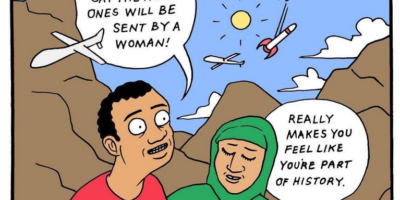By Michael Benton
With a newly refurbished auditorium, high-def projection and a new screen, we are proud to announce the Fall 2010 version of the Bluegrass Film Society.
September 15: Sword of Doom (Japan: Kihachi Okamoto, 1966: 119 mins)
Sword of Doom is a film that has had a huge impact on later filmmakers, but is often unknown to the average film fan. I have counted at least three major scenes that Tarantino alone has ripped/riffed-off. Based partly upon Nakazato Kaizan’s classic Japanese historical novel about the Edo period when the Shogunate collapsed and a period of violent unrest led to the rise of an Emperor-dominated government.
The film follows Ryunosuke a sociopathic samurai hunted by the righteous and the villainous as he wanders the bleak landscapes of this period. A beautifully shot film, it has been given the Criterion treatment and should be a feast for the eyes!
September 22: Seven Beauties (Italy: Lina Wertmüller, 1975: 118 mins)
For about a decade Lina Wertmüller was one of the world’s top filmmakers and this was her masterpiece, which resulted in her becoming the first woman ever nominated for a Best Director Oscar. Seven Beauties is the story of Pasqualino Frafuso, a sort of Italian everyman, who fights to survive World War II. In a powerful performance that journeys between the film’s past and present, the humorous to the horrific, the beautiful to the grotesque, actor Giancarlo Giannini turns in one of the best performances ever captured on film. Wertmüller’s film is an unblinking look into the human condition that you will not soon forget.
September 29: Revanche (Austria: Götz Spielmann, 2008: 122 mins)
A beautifully shot meditation on revenge and second-chances, foreshadowed in the double-meaning of the title. Everyone has dreams, and this is where the film starts, with the brutish Alex dreaming of escaping his present circumstances with the beautiful prostitute Tamara. All he needs is that one big score to provide them with the means for leaving the place and the people who keep them down. What happens, and the reverberations of these choices, are played out through Spielmann’s stunning character study.
October 13: In the Mood for Love (Hong Kong: Wong Kar Wai, 2000: 98 mins)
Wong Kar Wai’s rich colors, evocative sense of place/era, sizzling costumes and unique stylish sets, are put to use in this erotically-charged, but subtle romance. A man and a woman move into a crowded apartment, full of colorful characters, with their respective spouses. Through time they discover that they are perfectly matched and that their spouses are having an affair. The narrative follows their decision in the aftermath of these twin discoveries. Friendship, love, lust… what do they choose?
October 20: The World According to Monsanto (France/Canada/Germany: Marie-Monique Robin, 108 mins)
From Agent Orange to pesticides and genetically modified crops, the Monsanto corporation has always tried to represent themselves as agents of positive technologies that create a better world. In this documentary filmmaker Robin exposes the inner dealings of the “poster child for malignant corporate influence in government and technology” through “first-hand accounts by victims, scientists, and politicians.” As Monsanto races to genetically engineer and patent the world’s food supply, it is ever more important to understand their tactics and influence.
October 27: Haxan: Witchcraft Through the Middle Ages (Denmark/Sweden: Benjamin Christensen, 1922: 104 mins)
I wanted to show something unique for Halloween that most people haven’t seen so I chose this legendary classic. From the Criterion description: “Grave robbing, torture, possessed nuns, and a satanic Sabbath: Benjamin Christensen’s legendary film uses a series of dramatic vignettes to explore the scientific hypothesis that the witches of the Middle Ages suffered the same hysteria as turn-of-the-century psychiatric patients. But the film itself is far from serious—instead it’s a witches’ brew of the scary, gross, and darkly humorous.”
November 3: Paisan (Italy: Roberto Rossellini, 1946: 120 mins)
Another legendary film long unavailable in the U.S. in a decent edition, this is a part of Rosselini’s acclaimed War Trilogy (thematic in relation). Following his celebrated Rome, Open City, the film is framed around six episodes set during the liberation of Italy near the end of WWII. A realist depiction, featuring both professional and non-professional actors , it seeks to explore the difficult circumstances of communicating across cultures during stressful circumstances.
November 10: Che, Pt 1 (France/Spain/USA: Steven Soderbergh, 2008: 134 mins)
November 17: Che, Pt 2 (France/Spain/USA: Steven Soderbergh, 2008: 135 mins)
This internationally financed production features Benicio del Toro’s celebrated, Cannes award-winning performance as the revolutionary Che. Far from conventional, this film refuses to simply present Che as a martyr, hero or villain. Instead it seeks to explore the complexity of Che’s role in some of the most important events of his time. In doing so, it seeks to understand his continuing global influence as an icon revolutionary resistance.
Che is broken into two parts: the first presents a complex representation of the successful Cuban revolution and the second is an action piece centered around the fateful Bolivian campaign.
November 24: Ballast (USA: Lance Hammer, 2008: 96 mins)
Continuing the BFS mission to seek out and introduce unique American independent films I have chosen this celebrated film that explores the aftermath of a suicide, and its effect on three people living in the hardscrabble environment of the Mississippi Delta. Celebrated by critics when it traveled the film festival circuit, Ballast could have been certified as a Dogma film for its techniques that eschew artificial enhancement. Even so, Hammer’s work still manages to amaze the viewer with its powerful sense of place, beautifully shot environment, and charged performances from the three non-professional actors, all of whom hail from the Mississippi Delta.
December 1: Antichrist (Denmark: Lars Von Trier, 2009: 108 mins)
I have yet to see this film, but I do know that no film managed to cause as much controversy or dissension last year as this film did. Here is Criterion’s description: “Lars von Trier shook up the film world when he premiered Antichrist at the 2009 Cannes Film Festival. In this graphic psychodrama, a grief-stricken man and woman—a searing Willem Dafoe and Cannes best actress winner Charlotte Gainsbourg—retreat to their cabin deep in the woods after the accidental death of their infant son, only to find terror and violence at the hands of nature and, ultimately, each other.
But this most confrontational work yet from one of contemporary cinema’s most controversial artists is no mere provocation. It is a visually sublime, emotionally ravaging journey to the darkest corners of the possessed human mind; a disturbing battle of the sexes that pits rational psychology against age-old superstition; and a profoundly effective horror film.”
December 8: Dead End (France/USA: Jean-Baptiste Andrea and Fabrice Canepa, 2003: 85 mins)
Ever since David Lynch’s Twin Peaks I have had a strange fascination-revulsion for the actor Ray Wise. Seeking a “different” kind of Christmas film I chose this French/American co-production as a celebration of all that can go wrong on the journey home for the holidays.
The Bluegrass Film Society screens their films on Wednesday nights at 7:30 PM in the main auditorium of the Bluegrass Community and Technical College. It is free of charge and open to the community. All films are screened for educational purposes. You can find the BFS on Facebook.



Leave a Reply